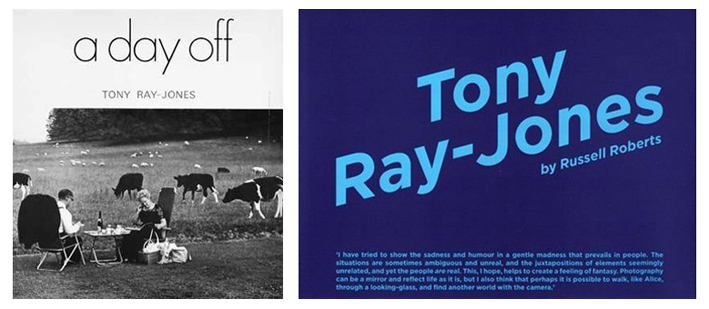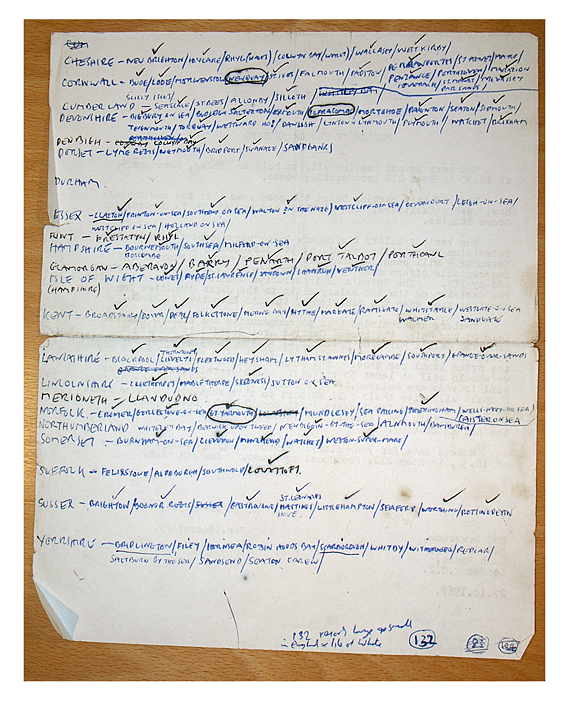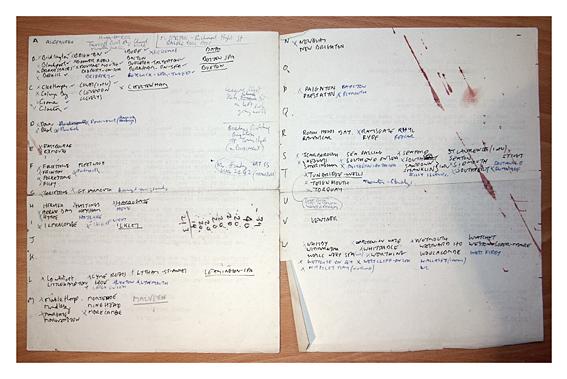TONY RAY-JONES
April 16th, 2008 admin“…the surprising thing about Ray-Jones was that he had a different idea of what subject matter was possible for serious photography. It did not have to be heroic or poetic in any overt sense: it could be on the surface as tedious or as bland as our real tedious and bland lives usually are, and the photographs might still be compelling.”Â
John Szarkowski, Director of Museum of Modern Art, New York (1962-1991)
Â
“His work spanned just a decade – he died aged 30 – but with his striking 1960s images of Britons at play, Tony Ray-Jones helped change the face of British photography for ever.”
Â
Liz Jobey, The Guardian, 2004
Â
Books of Tony Ray-Jones’ work-
As part of my research for this project, last summer I paid a visit to the National Media Museum Photography Collection in Bradford whose extensive collection encompasses not only that of The Royal Photographic Society Collection, the Kodak Museum and the Daily Herald Archive, but also the Tony Ray-Jones archive. Many of the original photographs from Ray-Jones’ classic book on England ‘A Day Off; an English journal’ (Thames & Hudson) are held in the Collection alongside his diaries and notes from the project.
Given the huge significance of Ray-Jones’ landmark book ‘A Day Off’ (which was published in 1974 after his death) and its legacy as a document about England and Englishness, I was keen to see his original prints and read extracts from his diary in person.  On a personal note, Ray-Jones’ work had also been an important influence in my early development as a photographer and given I’m now about to depart on my own photographic journey around England,  I wanted to explore a bit deeper the work of this visionary artist.
Of his work in England, Ray-Jones wrote in Creative Camera (1968): “My aim is to communicate something of the spirit and the mentality of the English, their habits and their way of life, the ironies that exist in the way they do things, partly through tradition and partly through the nature of their environment…For me there is something very special and rather humorous about the ‘English way of life’ and I wish to record it from my particular point of view before it comes Americanised. We are at an important stage in our history, having in a sense just been reduced to an island or defrocked and, as De Gaulle remarked, left naked.â€
In the introduction to his book ‘Tony Ray-Jones’ (Chris Boot Ltd, 2004) Russell Roberts writes “A Day Off…..contrasted the veneer of modern leisure with a perception of the deeper significance of tradition and custom. It is an image of England from the perspective of both insider and outsider, employing a mix of empathy and ironic detachment, and laced with sardonic wit and pathos.â€
and
“Looking at A Day Off we do not see a stoic, entrenched nationalism in the face of imported values, but an account of Englishness that constitutes a more playful commentary about identity. His point about an England becoming increasingly Americanised invites us to find in these photographs traces of US influence and possible sites of English resistance. The celebration of ‘local culture’ heightens the differences in Englishness, and he presents a range of images that both reflect and undermine stereotypes.â€
It was fascinating (and humbling) to read Ray-Jones’ notebooks, which were full of lists, plans and ideas for possible pictures for his England work and revealed an extremely methodical approach to his organizing of the project. As seen here where he outlines possible ideas by location and places alphabetically –
Â
© Tony Ray-Jones/National Media Museum
© Tony Ray-Jones/National Media Museum
Â
Extracts from his diaries highlight some of the struggles he encountered balancing editorial assignments and producing his own work, as well as funding the project. There was also a fascinating list, headed ‘APPROACH’:
Â
© Tony Ray-Jones/National Media Museum
Â
which I’ve reproduced here-
·      BE MORE AGGRESSIVE
·      GET MORE INVOLVED (TALK TO PEOPLE)
·      STAY WITH THE SUBJECT MATTER (BE PATIENT)
·      TAKE SIMPLER PICTURES
·      SEE IF EVERYTHING IN BACKGROUND RELATES TO SUBJECT MATTER
·      VARY COMPOSITIONS AND ANGLES MORE
·      BE MORE AWARE OF COMPOSITION
·      DON’T TAKE BORING PICTURES
·      GET IN CLOSER (USE 50mm LESS)
·      WATCH CAMERA SHAKE (shoot 250sec or above)
·      DON’T SHOOT TOO MUCH
·      NOT ALL AT EYE LEVEL
·      NO MIDDLE DISTANCE
Â
Finally, a letter on headed note paper dated May 25 1965, highlight Ray-Jones’ social concerns as a visual artist –
Â
© Tony Ray-Jones/National Media Museum
Â







April 23rd, 2008 at 8:26 am
[…] To accompany the new project, Simon has started a blog here, where he is encouraging the public to email suggestions for events that he could photograph. Also check out his excellent post giving a photographic timeline on photographic projects in his post here and a similarly illumating piece on Tony Ray-Jones here. […]
April 29th, 2008 at 2:58 pm
Good to see the notebooks here. I’ve seen them at the NMM but have never had access to scans. I’d like to add these to my pages about TR-J if that’s OK?
Good luck with ‘We English’; I shall follow progress with much interest as the social landscape is so different now to the 1960s – as are the ‘English’ themselves.
The ‘ideas’ pages make fascinating reading though – many of the things that people consider may be of interest are those that Ray-Jones himself would have looked for.
May 13th, 2008 at 2:45 am
Good to see some material from the Tony Ray-Jones archive. If you have any more material from your visit, I’m sure a lot of people would be interested to see it!
January 3rd, 2009 at 2:58 am
As a photographer myself, I very much identify with his approach list. Thank you for this post.
Can I link to the scanned image of that list on my blog?
January 3rd, 2009 at 5:16 am
[…] came across two articles about Ray-Jones today. One is on 5B4, another is on We English. Simon at We English showed us some scanned pages from Ray-Jones’ notebook. On of page there […]
April 7th, 2011 at 9:28 am
“use 50mm less” should probs be “use 50mm lens”. thankx for posting these!
September 7th, 2011 at 10:10 pm
[…] Roberts has a interesting post here about his working methods and what he discovered while at the National Media Museum photography […]
September 28th, 2012 at 11:00 am
A great insight into one of my heroes,his prediction of greater American influence on British society proved to be so accurate.
His notes are so revealing of both his approach and his insecurities “don’t take boring pictures”, great advice !
I wonder what subjects would attract him now if he were still with us.
This man taught me to see – I hope heaven is classless !
July 27th, 2013 at 11:09 am
Thank you very, very much for that post. I just discovered Ray-Jones while reading a book on photography and thought about googleing his name and there we go…
Thank you